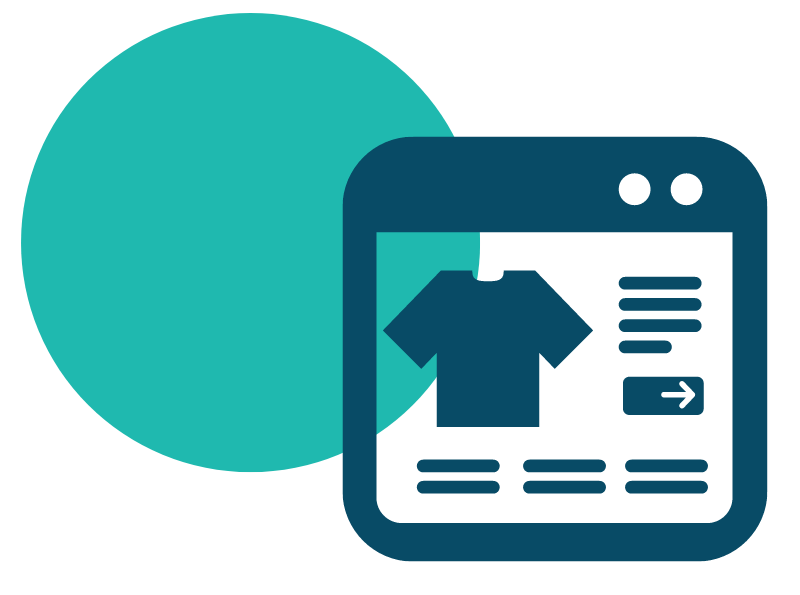Elevate your eCommerce with tailored Shopify Migration Services.
Improved Productivity: Streamlined processes enhance workflow, allowing employees to complete tasks faster and more efficiently.
Enhanced Accuracy: Simplifying processes reduces errors and automates tasks, leading to more accurate results.
Better Decision Making: Clearer procedures and improved information flow enable informed decision-making aligned with organizational goals.
Improved Customer Satisfaction: Efficient processes enhance customer service, leading to quicker responses and increased satisfaction.
Increased Agility: Streamlined organizations can adapt quickly to market changes, providing a competitive advantage.
Environmental Sustainability: Streamlining reduces waste and promotes sustainable practices, cutting costs and improving environmental impact.
Employee Morale and Engagement: Clear, efficient processes boost job satisfaction, leading to higher engagement and lower turnover.
Risk Reduction: Streamlined workflows decrease the risk of non-compliance with regulations through regular checks and balances.
Innovation: Eliminating inefficiencies frees up resources for developing new products and improving existing services.


Shopify’s cloud-based infrastructure and multi-tiered subscription model allow businesses to easily scale up or down based on their needs, providing flexibility as the business grows.

Shopify provides an all-in-one platform, consolidating various aspects of e-commerce like inventory management, payment gateway integration, customer relationship management, and marketing tools.

Shopify is known for robust security, offering SSL encryption and PCI compliance to protect customer data. Its cloud-based structure ensures high uptime, providing a reliable shopping experience.

Shopify offers comprehensive data analytics tools, providing businesses with key insights into their sales, customer behavior, and more, aiding in informed decision-making.

Shopify themes are mobile responsive, meaning they adapt to different device screens, which is crucial as a significant portion of online shopping occurs on mobile devices.

Shopify provides round-the-clock customer support, ensuring businesses can receive assistance whenever needed.
Global Market Reach: E-commerce allows businesses to expand their customer base globally, increasing sales potential.
Lower Operational Costs: Online operations reduce overhead, minimizing the need for physical space and staffing.
Data-Driven Insights: Transitioning to e-commerce provides valuable customer data for informed decision-making and personalized marketing.
Speed and Efficiency: E-commerce enhances transaction speed and automates processes like inventory management and order processing.
Customization: Online platforms enable personalized content and promotions, boosting customer engagement and conversion rates.
Improved Customer Experience: Enhanced ease of use and quick responses lead to greater customer loyalty and repeat business.
Eco-Friendly: E-commerce can lower transportation emissions and reduce the need for physical retail space.
Agile and Adaptable: E-commerce platforms quickly respond to market trends and customer preferences, keeping businesses competitive and innovative.

Shopify migration services facilitate a seamless transition to the Shopify platform by providing essential tools and support for transferring data and functionalities. The process involves seven key phases: planning, data migration, design and theme migration, SEO and URL migration, testing and quality assurance, and post-migration support and maintenance. These structured phases offer benefits such as improved website performance, enhanced user experience, optimized SEO, and streamlined inventory management. Although challenges like data loss and compatibility issues may arise, Shopify migration services minimize risks through meticulous planning and thorough testing. By preserving customer data and maintaining consistent branding, the migration process ensures a positive customer experience, while strategies like compatibility testing and staged migration support business continuity. Ultimately, Shopify migration services enhance e-commerce performance through efficient workflows and integrated marketing tools.










To migrate from Weebly to Shopify, you can use migration tools or services designed for this task, facilitating the transfer of product data, customer information, orders, and other relevant data from Weebly to Shopify while ensuring data integrity and maintaining the design and layout of your website.
